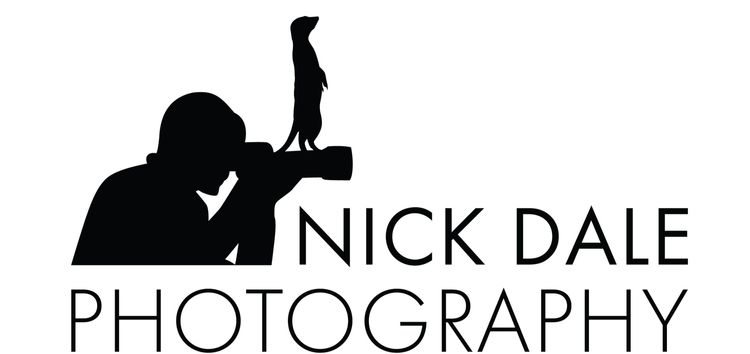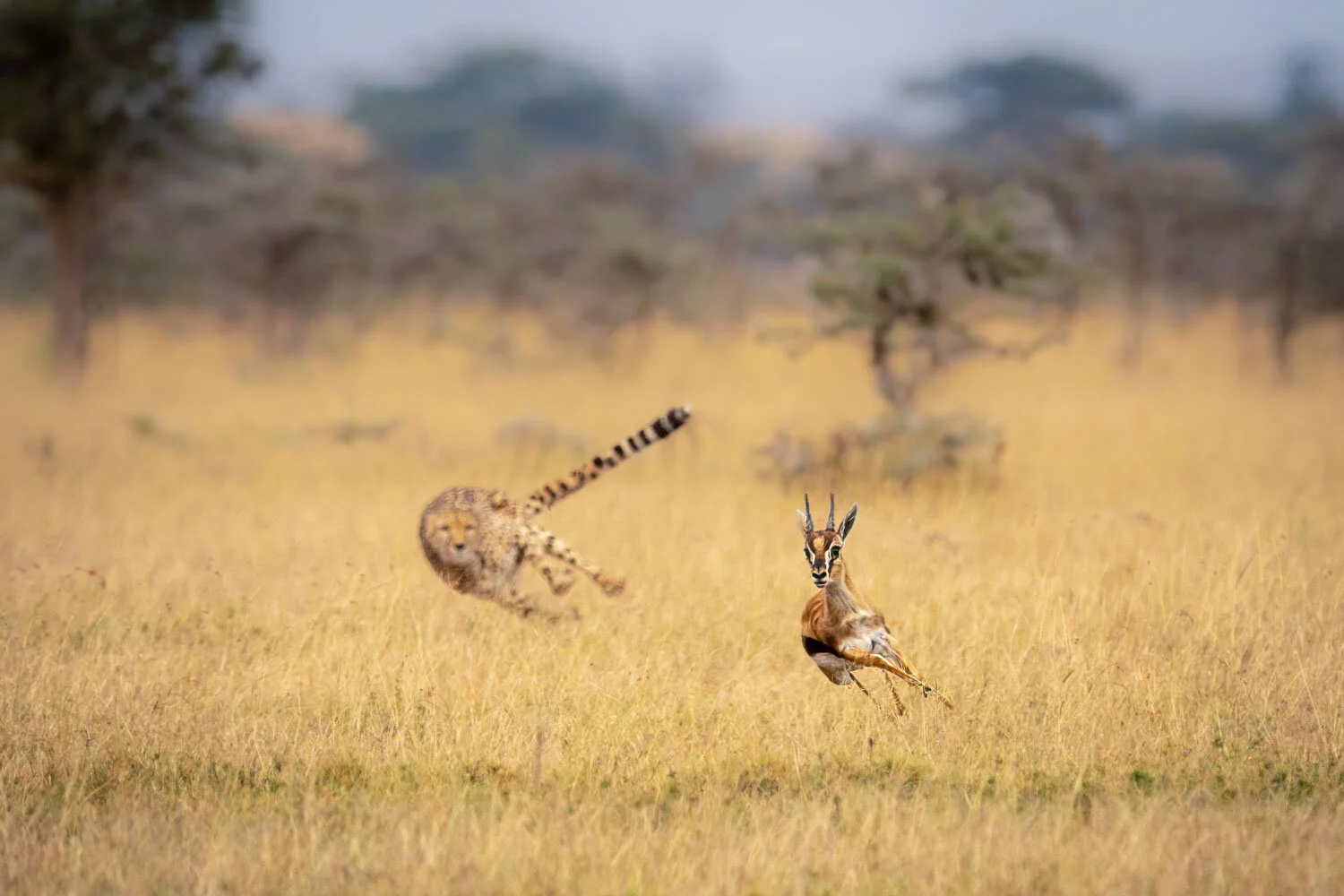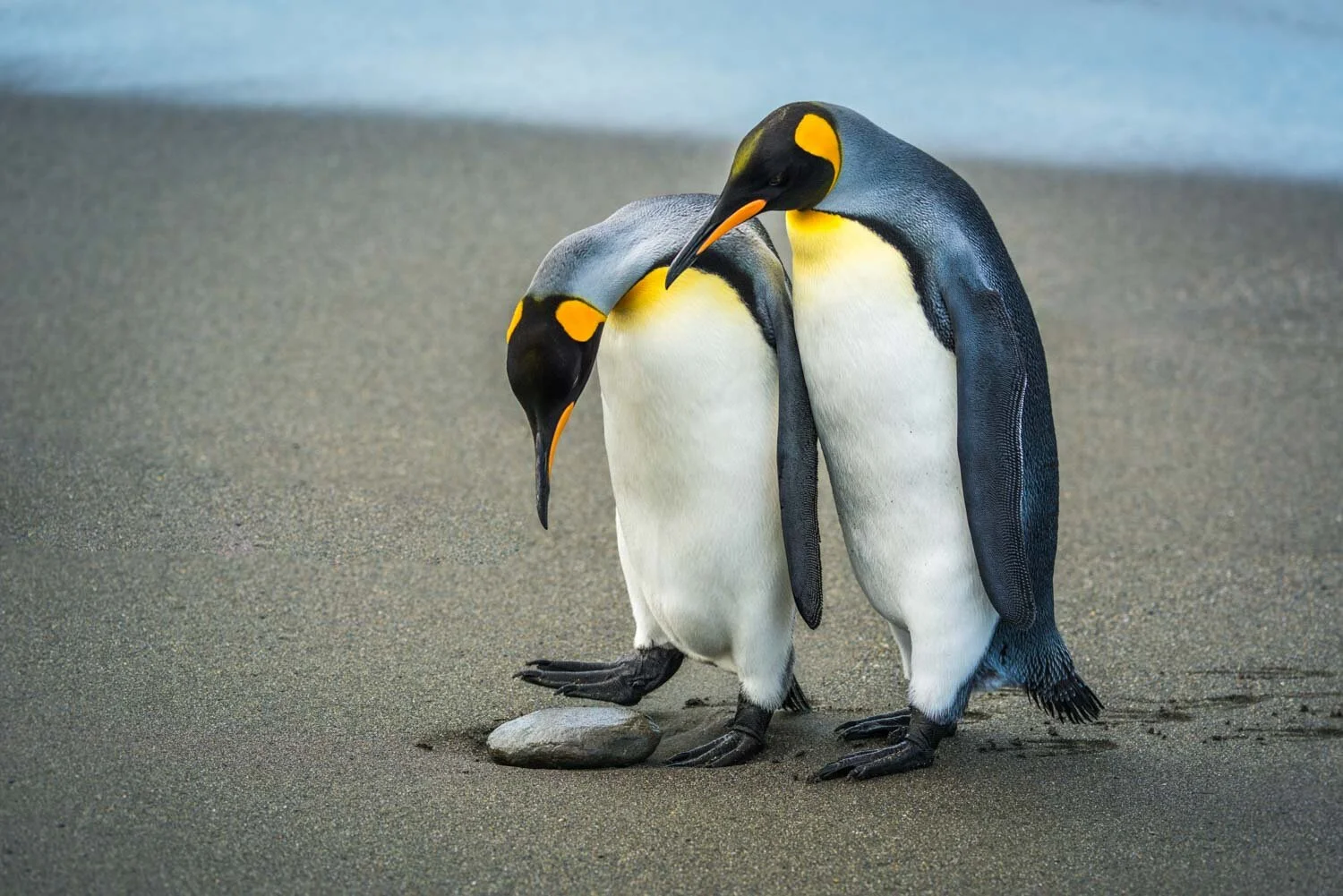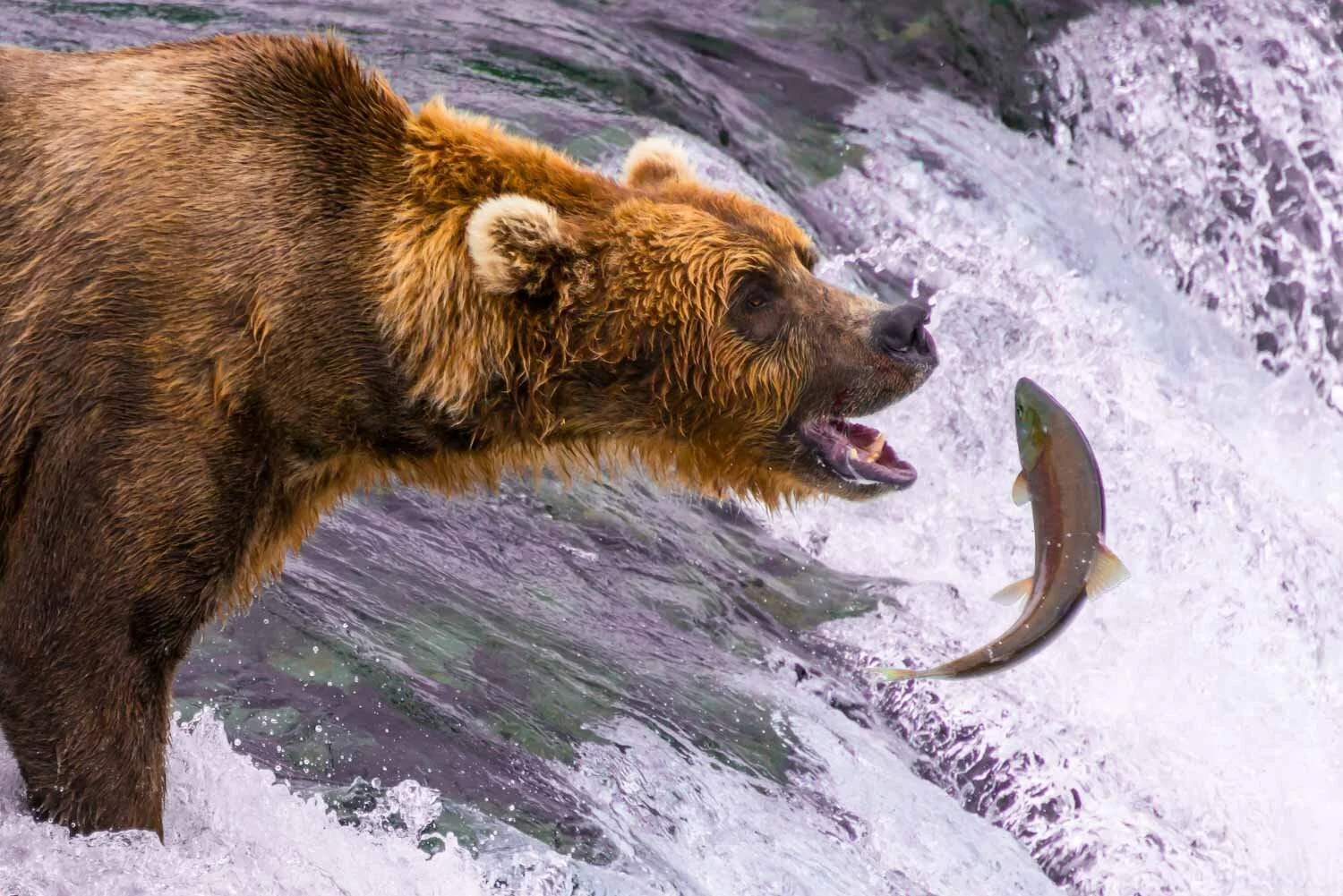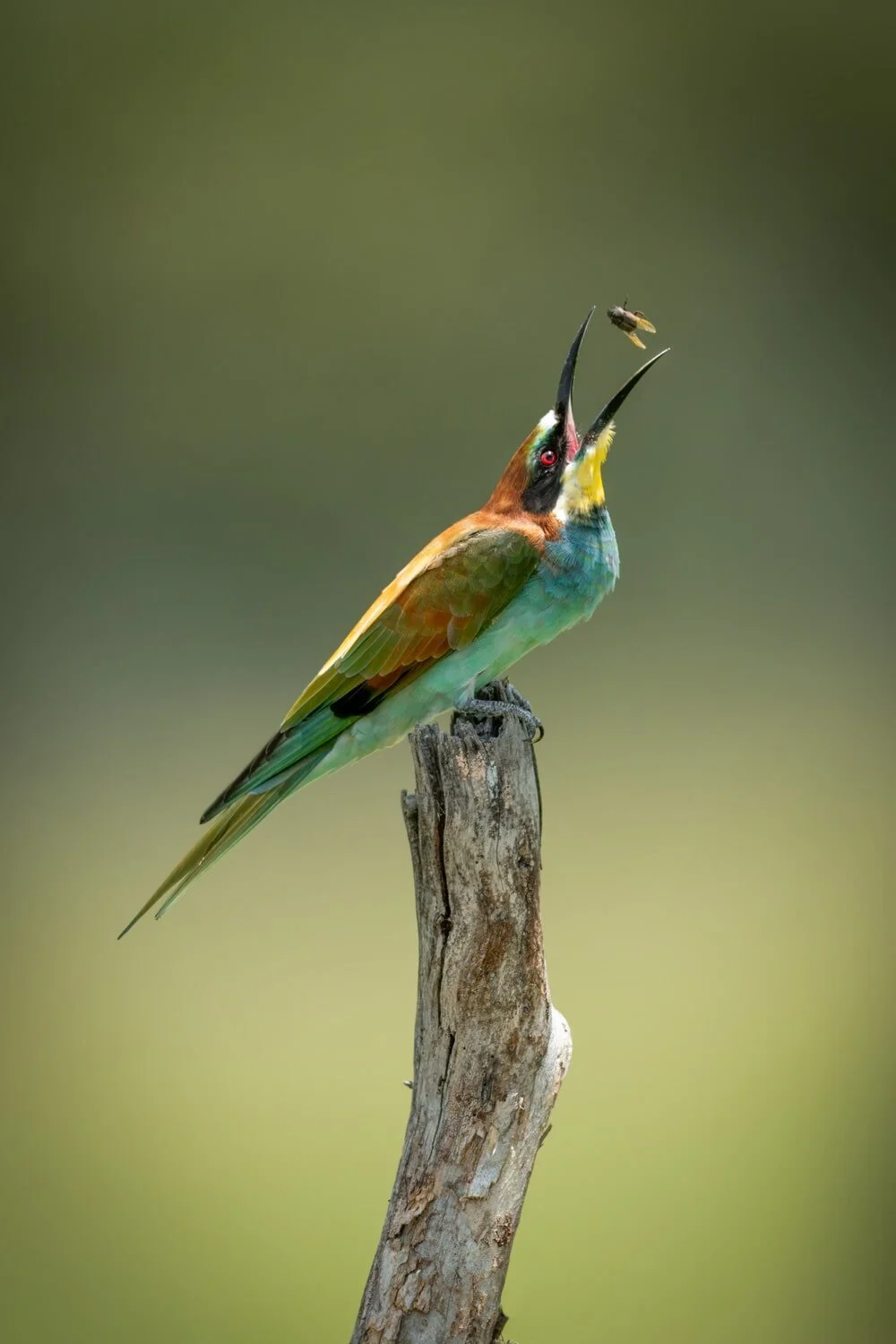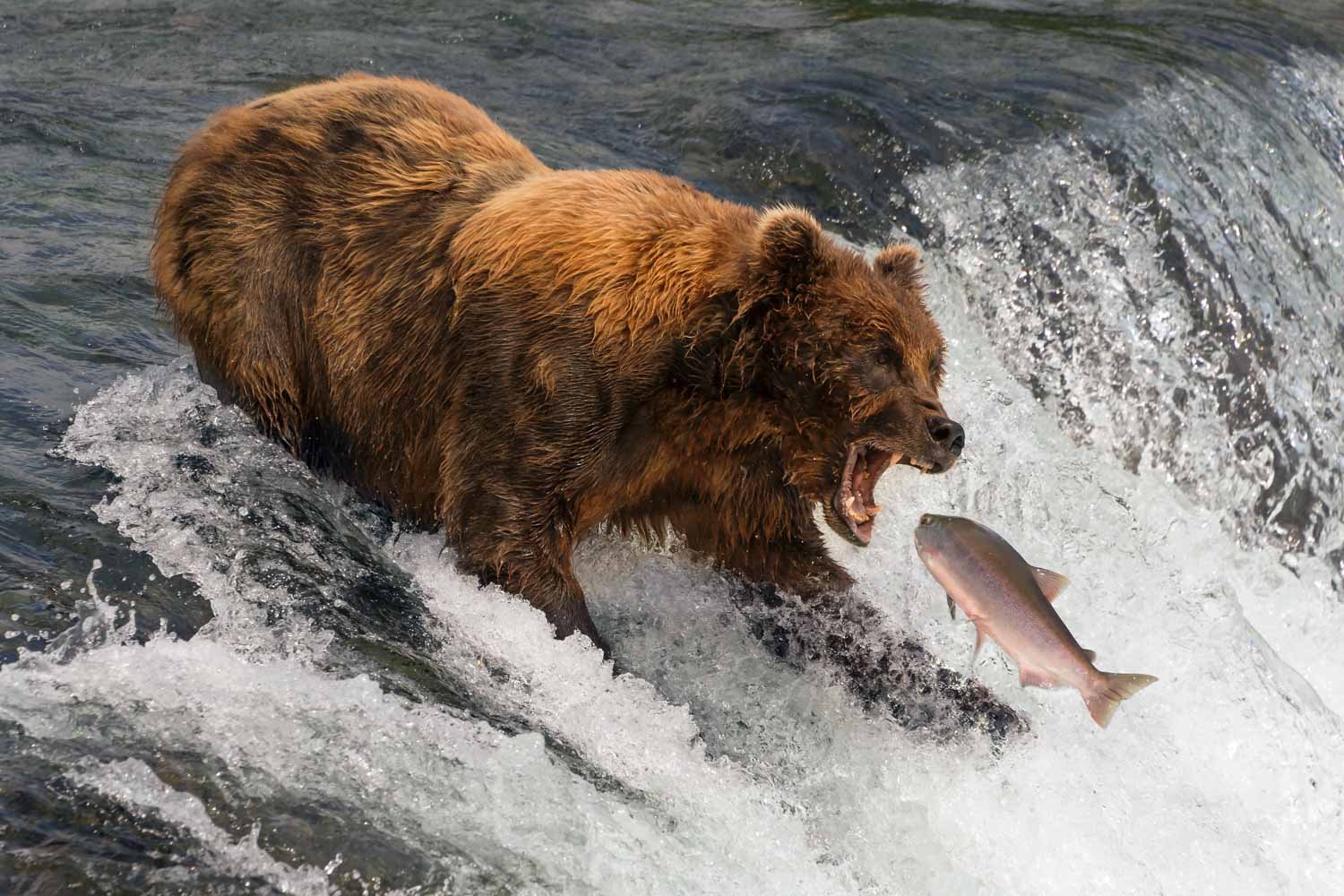Too many secrets…
If you’re a wildlife photographer, but you’ve never won a wildlife photography competition, here are a few trade secrets to help you break your duck!
Admittedly, there are some images that will do well commercially and some that will win prizes, but I’ve illustrated each category with an image of mine that’s actually won some sort of award.
Some of those have also sold well, such as Eddie the Penguin and Bear Gills, but others have been less successful.
My friend James is very confident about which are the kind of images that will do well in competitions and which are the kind that will do well commercially, but you never really know in advance what the public wants.
Judges are a little bit easier to predict, but sometimes all you can do is follow the rules of composition and hope for the best...!
Equipment
He-Lion
This image was part of the winning Wildlife Series in the 15th Pollux Awards/The Worldwide Photography Gala Awards.
First of all, I have to say that you’re unlikely to win anything with an iPhone!
Unless it’s a specialist competition restricted to mobiles, you need pretty decent kit to be able to take great wildlife shots.
Wildlife photography generally relies on fast shutter speeds, high frame rates, long lenses and the sensor’s ability to cope with low light and high ISOs, and you just can’t beat a full-frame DSLR or mirrorless camera for all that.
That’s not to say that a great wildlife photographer is no more than the value of his camera equipment, but it makes life so much easier.
I once saw a slideshow given by Mark Carwardine about the history of the Wildlife Photographer of the Year competition, and it was amazing to see the difference between the early and later winners.
Back in the 1970s, you could win the whole thing with a pretty picture of a flamingo at sunset, but a few years ago the winning shot showed a flight of snow geese coming in to a land on a lake - and that meant the photographer had to use an underwater camera housing and a motion sensor to trigger the shutter release!
I haven’t gone that far (yet!), but this shot of a lion’s head, for example, was taken with an 800mm lens and a 1.25x teleconverter - making the focal length 1000mm!
Action
"Behind you!"
This image won two user awards on ePHOTOzine and was favourited by one of the editors of National Geographic on the Your Shot website.
Which would you prefer to see: a bird in flight or a bird on a stick?
People generally prefer action shots to portraits, but they’re obviously more difficult to take, so there aren’t as many good ones to be found.
If you want to stand out from the crowd, then you could do worse than focus on action shots.
Jeffrey Wu is a wildlife photographer famous for his spectacular images of cheetah hunts, but he freely admits he doesn’t even bother taking portraits of the animals!
This picture of a cheetah hunting a Thomson’s gazelle has won a few awards, and the main reason is surely because of the thrill of the chase.
That’s one of the exciting elements of an action shot: we don’t know the result!
Will the cheetah kill its prey, or will the prey escape?
Timing
Dustbuster
This image won Best of Show in Grey Cube Gallery's Nature exhibition (see video), first place in Art Room Gallery's 'Nature' competition in March 2018 (see video), was part of the winning Wildlife Series in the 15th Pollux Awards/The Worldwide Photography Gala Awards, won a Readers’ Choice award on ePHOTOzine, finished second in SINWP's 'In the Wild' Photography Competition, was a finalist in Fusion Art's 3rd Annual Animal Kingdom Art Exhibition in January 2018 (see video), was National Geographic's Photo of the Day on 9 October 2017 and received nearly 25,000 likes when it was featured on Instagram! It was also runner-up in The Daily Telegraph's weekly Big Picture competition and Outdoor Photography's Reader Gallery.
A key part of action shots is timing.
The challenge is to capture what Henri Cartier-Bresson called ‘the decisive moment’.
If the image would be ruined if it had been taken a fraction of a second earlier or later, then you’ve probably nailed it.
In order to do that, you have two options:
wait for the right moment and take one shot
take a continuous burst of shots before, during and after the action.
Different photographers have different views on this, but, personally, I prefer the security of taking a burst.
It’s a numbers game, and the more pictures you take, the more chance you have of getting that one prize-winning image that makes it all worthwhile.
Obviously, I’m not advocating a ‘spray and pray’ approach: you still have to choose your moments carefully.
However, animals and birds can move so rapidly and unpredictably that you just can’t afford to rely on taking one shot at just the right moment.
In the case of this elephant image, I took a burst of around 10 shots, and this was the only one that captured ‘the decisive moment’ with the trunk in the right position and the cloud of dust exploding against the animal’s flank.
Light
"Tiger, tiger, burning bright…"
This image won Best in Show at Fusion Art's 3rd Annual Animal Kingdom Art Exhibition in January 2018 (see video) and a Readers’ Choice award on ePHOTOzine. It was part of the winning Wildlife Series in the 15th Pollux Awards/The Worldwide Photography Gala Awards and was also runner up in The Daily Telegraph's Big Picture competition in December 2017, won an Honourable Mention in LightSpaceTime’s Animals Art Exhibition in April 2018, was chosen to appear in the Exodus Travels 2018 calendar and made the shortlist for Outdoor Photographer of the Year 2018.
As Mark Carwardine says, the three basic building blocks of a photograph are the subject, the background and the light.
Of these, the light can often be the most important in setting the mood or atmosphere.
Some photographers, for instance, only take pictures during the golden hour after sunrise and before sunset, and they don’t even bother going out in the middle of the day!
I wouldn’t go that far (and I once saw four male lions take down a buffalo at around 10 in the morning…), but a good picture can easily be elevated to a great one if the light is right.
I took this shot of a tiger at around midday on a perfect sunny day in India, but I knew that I had to do something to make it stand out, so I underexposed by a stop and played around with it in Lightroom so that it looked like the animal was in a cave, illuminated by a single shaft of sunlight.
Originality
"Who turned out the lights?"
This image won Shoot the Frame’s May 2020 ‘Shoot the Wild’ competition, was runner-up in The Daily Telegraph's weekly Big Picture competition and among the finalists in the 2nd ROYGBIV Color Awards and The Independent Photographer's 'Colour' Photo Competition., earning over 2,000 likes on Instagram - which was more than the winner! It was also chosen as a finalist in the Fusion Art Open Art Exhibition (see video).
This is always the challenge for every photographer: how can you make your images stand out somehow by being original.
It’s a difficult trick, particularly now that cheaper travel and the existence of the worldwide web have made great wildlife photography so much easier to find.
Every shot seems to have been taken already, so how can you possibly make your images unique?
The answer is to take one or two ‘record shots’ and then work the scene, playing around with the variables that are in your control: underexposure, overexposure, changing the focal length, the shutter speed and/or the aperture.
In this case, I was taking pictures of a giraffe, but I wasn’t happy with them, so I decided to underexpose by a couple of stops.
It was again a lovely, sunny day, but you wouldn’t think it from the final image, would you?
I call it a ‘sunny silhouette’, and I’d never come across it before, but now I’m increasingly seeing photographers taking similar shots.
Rarity
Eddie the Penguin
This image won first place in Art Room Gallery's 'Nature' competition in March 2018 (see video). It was also among the editors' favourites in the National Geographic Nature Photographer of the Year Contest 2016, won a Gold Award in the August 2017 Monthly Photographic Competition run by the Society of Photographers, won a Readers’ Choice award on ePHOTOzine, was twice runner-up in The Daily Telegraph's weekly Big Picture competition (here and here), was a finalist in the 2nd ROYGBIV Color Awards, Fusion Art Open Art Exhibition (see video) and their 2nd International Photography Exhibition, and it was Highly Commended in SINWP’s Our Colourful World, Joys of Nature and Bird Photography competitions.
A poster of my jumping penguin also appeared on the inside of Sam's locker in the US teen drama Atypical! How cool is that...?!
Rarity is richness, so if you can produce a shot of an endangered species or go to a far-flung corner fo the globe to take your pictures, then you’ll probably be rewarded.
I noticed, for example, that there were a lot of photographs taken in China in the latest Wildlife Photographer of the Year exhibition at the Natural History Museum and almost none taken in Africa!
That was a bit annoying from my point of view as I spend so much time in Kenya and Tanzania, but it’s just something that you have to accept.
The judges see so many works that they mentally dismiss any that they think they’ve seen done before.
It may not always be fair, but it also gives wildlife photographers an opportunity: why not make that trip to Antarctica that you’ve always dreamed of?
That’s what I did in 2016, and I came away with this shot of a jumping penguin.
It’s won countless awards, and I’ve managed to sell nearly 2,500 copies of it through stock agencies!
Everybody loves penguins, but it’s time-consuming and very expensive to get down there, so the rarity factor comes into play.
Humour
"Come on, darling, it's just a rock..."
This image made it into the second round of the Natural History Museum's 2018 Wildlife Photographer of the Year competition, won a Readers’ Choice award on ePHOTOzine, won a Judge’s Choice award in SINWP’s Bird Photography Competition, was Highly Commended in SINWP's Joys of Nature Photography Competition and won a Special Recognition award in LightSpaceTime’s Animals Art Exhibition. It was also ‘trending’ as one of the most popular photographs on National Geographic’s Your Shot on 20 June 2018 and was runner-up in the Guardian Readers’ travel photography competition.
“This portrait of a pair of king penguins is both funny – make up your own caption – and heart-warming, as well as perfectly executed.” Mick Ryan, judge
Humour is rather overlooked when it comes to winning competitions.
However, there’s always a market for shots that make you laugh or smile, and there’s even a competition now called the Comedy Wildlife Photography Awards!
Animals do daft things a lot of the time, and the humour often comes from ‘anthropomorphism’ - in other words, animals behaving like humans.
I saw these two king penguins on South Georgia, and they spent a good 10 minutes examining the rock.
I don’t know if they thought it was an egg - maybe even their own egg! - or whether they were just curious, but it was comedy gold.
This shot ended up reaching the second round of the Wildlife Photographer of the Year competition, and that’s the closest I’ve ever come to making the final exhibition.
Cuteness
Cub Scouts
This image was a finalist in Fusion Art’s Into the Wild competition and the Daily Feature on the @kings_animals_love Instagram account.
Cuteness and humour are related, particularly when it comes to the animal kingdom, and it usually involves young animals such as lion or cheetah cubs.
Wildlife photographer Paul Goldstein hates people saying, ‘Awww!’ when they see cute shots of baby animals, but that’s just something people like - and judges, too!
I was actually on a game drive with him when I took this shot of two cheetah cubs playing in a concrete pipe.
There was so much going on that we ended up spending a good two hours taking pictures, but this is my favourite.
It’s something to do with the uncomfortable angle of the cub’s head lying against the side of the pipe…
Environment
Miss Saigon
This image finished in fourth place in Fusion Art’s Into the Wild competition and was runner-up in The Daily Telegraph’s Big Picture competition in August 2018.
‘Environmental portraits’ seem to be increasingly popular these days.
The idea is that you place the animal in its surroundings so as to show where it belongs, where it calls home.
I love close-ups rather too much, so I don’t do this sort of thing very often, but sunset offers a good chance to experiment.
This shot is just as much about the sky as it is about the blue wildebeest on the horizon, and that means the animal can be relatively tiny in the frame in order to draw attention to the clouds and the setting sun.
Storytelling
Bear Necessities
This image won a Gold Award in the Wildlife category of The Societies' Monthly Photographic Competition, won a Special Merit Awards in LightSpaceTime's Animals Art Exhibition, won a Readers’ Choice award on ePHOTOzine and was shortlisted in The Daily Telegraph's Big Picture photography competition.
I always find the idea that every picture has to ‘tell a story’ a bit irritating, especially when it’s plastered all over the signage at the Wildlife Photographer of the Year exhibition!
After all, how much of a ‘story’ can one photo really tell? It’s hardly going to be War and Peace, is it…?!
However, I do sort of get the point.
One of the things a great photo can do is to present a situation and ask a question such as ‘Will the animal survive?’
The ‘story’ told by this shot of a bear catching a salmon would read something like this: “A salmon is trying to swim upstream back to its spawning grounds and has to jump a waterfall to get there, but a brown bear is waiting for it and is ready to catch it and eat it for lunch!”
It’s not Tolstoy, I know, but still…
Naming
Fly Bee
This image was one of the five finalists for the month of February in the Greatest Maasai Mara Photographer of the Year 2021.
I got into a bad habit of naming all my images using the format demanded by stock agencies.
That meant they all had seven-word titles with fewer than 50 characters.
Admittedly, the titles were very descriptive and told potential buyers exactly what they’d be getting for their money, but they didn’t really help me win competitions.
Paul Goldstein first gave me the idea of creating snappier titles with puns in them when I went on a trip to Spitsbergen.
He took a shot of a female polar bear leaning back on the ice with her leg in the air and showed it to us all later as his Shot of the Day.
The title was ‘Yoga Bear’…!
Since then, I’ve given all my four-star and five-star images a headline designed to appeal to buyers and competition judges alike.
This shot of a European bee-eater tossing a fly in the air was almost made for a caption competition, but I chose to call it ‘Fly Bee’.
Recycling
Bear Gills
This image won the Sunday Times/Audley Travel Big Shot competition in January 2017, won a Gold award in The Societies’ March 2020 Monthly Image Competition (and led to me being shortlisted for Photographer of the Year) won Best of Show in Grey Cube Gallery's Nature exhibition (see video), won the Animal Action category in the Wildlife Worldwide Photography Competition 2019, won first place in Art Room Gallery's Nature competition in March 2018 (see video), won SINWP's 'In the Wild' Photography Competition, won Picture Frames Express’s ‘All Creatures Great and Small’, won the March 2020 Daily Competition and Readers' Choice, Guest Editor and Highly Commended awards on ePHOTOzine, won Best of Contest in 35 Awards' Wildlife: Mammals competition, was part of the winning Wildlife Series in the 15th Pollux Awards/The Worldwide Photography Gala Awards, was a finalist in Fusion Art's 3rd Annual Animal Kingdom Art Exhibition in January 2018 (see video), was National Geographic's Photo of the Day on 2 August 2017 after being chosen in their Daily Dozen and was among the editors' favourites for Week 10 of their Travel Photographer of the Year competition. It also received nearly 25,000 likes on their Instagram page!
"Timing is everything in photography, and this image is a great example of that. Excellent use of your 300mm lens to capture this moment right here. I love how you composed the image and went with a medium frame and didn't get too close or tight on the bear. There's some nice spacing around the subject and this makes for an excellent wildlife image." Matt Adams - Producer, National Geographic Your Shot
It was also third in the Xposure 2017 Wildlife Photography Competition, commended in Photocrowd's 'The Colour Brown' competition, Highly Commended in Pursue Pictures’ Great Outdoors competition, SINWP's Wonders of Wildlife competition, given an Honourable Mention in Pursue Pictures' The Great Outdoors competition and the 2017 Neutral Density Photography Awards, chosen as an Editors' Pick in the ZEISS Photography Award 2018 and awarded a Mark of Excellence by the judges for the I SHOT IT Wildlife Photo Competition 2017.
"Well it is a well known spot for grizzly fishing but you have timed this perfectly earning a well deserved mark of excellence." Judge's comment
“So this isn't a landscape image, but this image is great! Wildlife photography is tricky: you rattle off a ton of shots, hoping to get a few good ones. This shot was captured at the perfect time, is composed well and is tack sharp, which can be hard to do with animals. It also tells the story of both the bear’s hunt for survival and the fish’s fight for survival.” Judge’s comment
The final ‘secret’ I want to share with you today is that images that win competitions tend to win other competitions, too!
Once you’ve won your first award, you should be thinking about entering the same photo into as many other competitions as you can.
As you can see, Bear Gills has won goodness knows how many prizes now, and it’s the most successful shot I’ve ever taken from that point of view.
There are sometimes rules in place to try and prevent this sort of thing, but I’d ignore them and just give it your best shot.
It’s always easier to ask for forgiveness than permission…!
If you’d like to order a framed print of one of my wildlife photographs, please visit the Prints page.
If you’d like to book a lesson or order an online photography course, please visit my Lessons and Courses pages.
